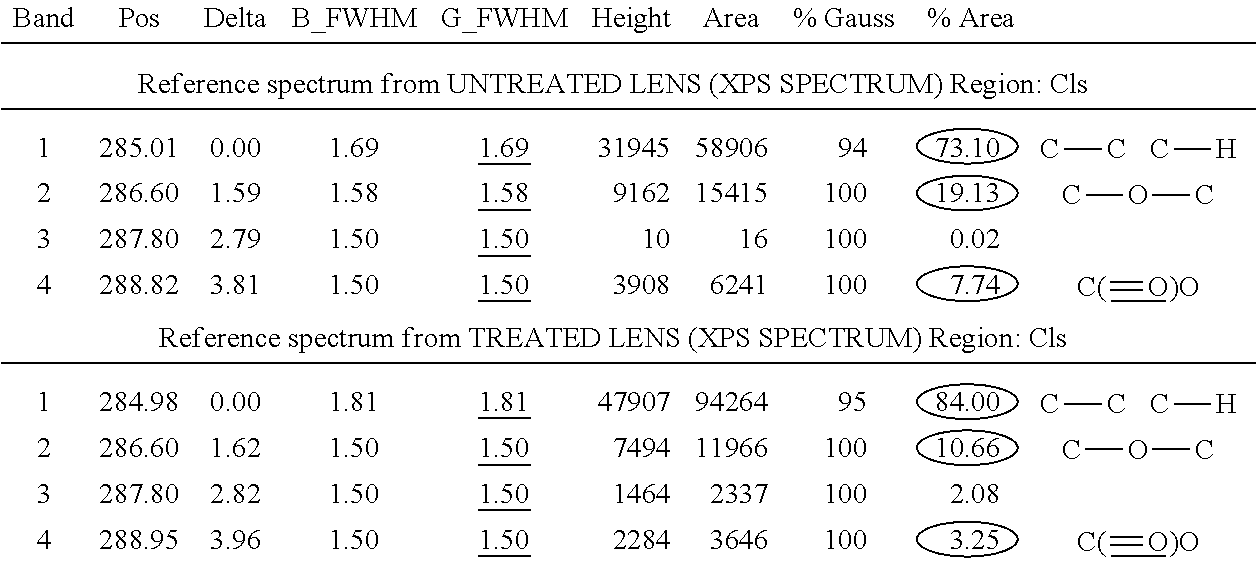Intraocular lens with a proofed surface
a proofed surface, intraocular lens technology, applied in the field of ophthalmic prostheses, can solve the problems of affecting the bulk properties of the lens material, affecting the mechanical and optical properties, and prone to reflective spots in the lens, so as to inhibit or reduce the formation of spots inside the polymer matrix
- Summary
- Abstract
- Description
- Claims
- Application Information
AI Technical Summary
Benefits of technology
Problems solved by technology
Method used
Image
Examples
example 1
[0033]The following example refers to X-ray photoelectron spectroscopy (XPS) surface analysis of intraocular tenses subjected to the hydrogen peroxide gas plasma treatment,
[0034]A surface proofing is shown due to the increase of apolar groups. As shown in the XPS spectra, an increase of C—C bonds and a decrease of C(═O)O and C—O—C bonds occurs after the hydrogen peroxide gas plasma treatment as indicated in the graphs of FIG. 1 and Table 1 below. The graph to the left shows the XPS spectra of an untreated lens in comparison to the graph to the right which shows the XPS spectra of a treated lens.
[0035]Radicals present in the plasma phase generate a reaction allowing a transfer of an hydrogen from the polymeric chains to the OH*radicals. This generates alkyl radicals, in the polymeric chain (R*).
[0036]The presence of two or more alkyl radicals R*, in accordance with XPS spectra FIG. 1 and Table 1 below, produces the formation of C—C bonds and therefore an increase of cross linking in ...
PUM
| Property | Measurement | Unit |
|---|---|---|
| transparency | aaaaa | aaaaa |
| homogeneity | aaaaa | aaaaa |
| porosity | aaaaa | aaaaa |
Abstract
Description
Claims
Application Information
 Login to View More
Login to View More - R&D
- Intellectual Property
- Life Sciences
- Materials
- Tech Scout
- Unparalleled Data Quality
- Higher Quality Content
- 60% Fewer Hallucinations
Browse by: Latest US Patents, China's latest patents, Technical Efficacy Thesaurus, Application Domain, Technology Topic, Popular Technical Reports.
© 2025 PatSnap. All rights reserved.Legal|Privacy policy|Modern Slavery Act Transparency Statement|Sitemap|About US| Contact US: help@patsnap.com


